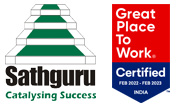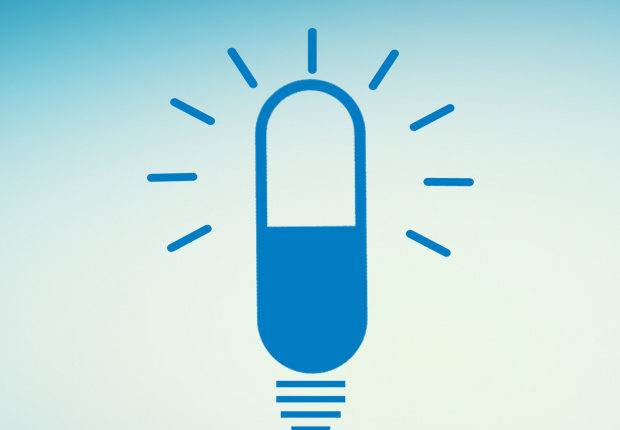Innovation in Indian Pharma – Empowering stronger global presence but fraught with challenges for serving Indian market
Rightfully referred to as the ‘Pharmacy of the World’, the Indian pharmaceutical industry is a strong manufacturing success story with significant global leadership in generic formulations and more than$15Bn of exports. In the knowledge paper released at ASSOCHAM MEDCON, we have highlighted that historical industry growth has been largely driven by volumes but the growth hereon entails high focus on innovation adoption in the intensely competitive global generics market.
Gaining competitive advantage with complex generics
India enjoys a dominant position in global generics, has the largest number of FDA approved labs outside the US and accounts for around 30% of US generics market (by volume). However, more recently, several new entrants (including companies from South Korea, MENA and China) are seeking to establish their presence in global generics. This intensifying competition combined with significant pricing pressure means that it is no more business as usual. Indian companies have strategically responded by developing greater strengths in complex generics. These include complex injectable formulations (liposomal, microsphere based depot formulations et al), inhalation drugs (DPIs and MDIs), topical products and transdermals. Case in point includes Sun Pharma’s Lipodox, a pegylated liposomal doxorubicin formulation (generic of Janssen’s Doxil) where Sun Pharm could commence selling the drug in 2012 prior to patent expiry in US due to a drug shortage and continues to the only generic on the market even after the Doxil patent has expired.
Riding the 505(b)(2) wave and building front-end presence – the specialty pharma strategy
Indian pharma companies are also taking initial steps to breakout of the backstage in the US pharma market. Most leading companies have started nurturing specialty pharma presence in strategically identified therapeutic areas such as oncology, ophthalmology, dermatology, CNS, pediatrics, dermatology and respiratory. This entails innovation adoption for building specialty pharma product portfolios and front end presence in the form of a salesforce in US. Again, innovation adoption is a key driver for success and Indian companies are actively riding the wave of 505(b)(2) products. Notable innovation adoption examples include dermatology products developed by Promius Pharma (Dr Reddys’s subsidiary), Lupin’s pediatric products such as Alinia and Locoid lotion and Dymista, a respiratory combination product out licensed by Cipla to Meda AB.
Abuse deterrent opioids
As a relatively recent interest, Indian pharma companies have also been active seekers of innovation platforms for abuse deterrent opioids, an opportunity triggered by the USFDA’s March 2016 draft guidance. With their pulse on the markets, interest in innovation adoption is palpable. In this area of innovation adoption, Zydus Cadila recently announced an acquisition of US based Sentynl Therapeutics for $171million.
Active technology seekers – strengthening the arsenal
The Indian pharma industry seeks to secure its compeitive advantage and move up the value chain with the pursuit of innovation led complex generics and specialty pharma opportunities. Innovating adoption is now recognized as a priority. There is great willingness to explore multiple models for technology access including in-house development, in-licensing as well as acquisition of products, technologies and technical capabilities. We notice equal momentum across these access possibilities.
The slower adoption landscape in manufacturing innovation
While there is high level of momentum in innovation adoption for formulations and innovative products, there has been a relatively slower momentum in manufacturing innovation. There is significant scope to embrace innovations for enhancing process efficiency, green manufacturing and most importantly, improved quality control in manufacturing. IoT adoption and greater innovation adoption in manufacturing quality control will be critical to maintain the success accomplished by the industry so far.
The big question ahead – incentivizing innovation in domestic markets
While applauding the quest for innovation and higher value addition in global markets, I cannot conclude without drawing attention to the most concerning factor – a gloomier landscape for Indian market. While there has been a very active innovation adoption landscape in formulation pipelines for regulated markets, we need to note that close to 85% of API used for the domestic market is imported. In FY16, India imported about Rs.13,000 crore of API from China of the total API imports of Rs 21,000 crore. Even at the formulation end, there has been very limited focus on innovation for the Indian markets. With price control threat looming large on companies, reward for innovation is often found lacking and there is apprehension to invest. While we cheer for our pharma industry rising to the next level of global presence, it is pertinent we engage in a multi-stakeholder discussion to address economic barriers for India focused innovation and prime the market to reward it. Without this, the goals set out in the National Heath Policy 2017 (approved by the Parliament in March 2017) could remain an aspiration.
Warning: preg_match(): Compilation failed: invalid range in character class at offset 12 in /home/sathguru/public_html/news/wp-content/plugins/js_composer/include/classes/shortcodes/vc-basic-grid.php on line 172


